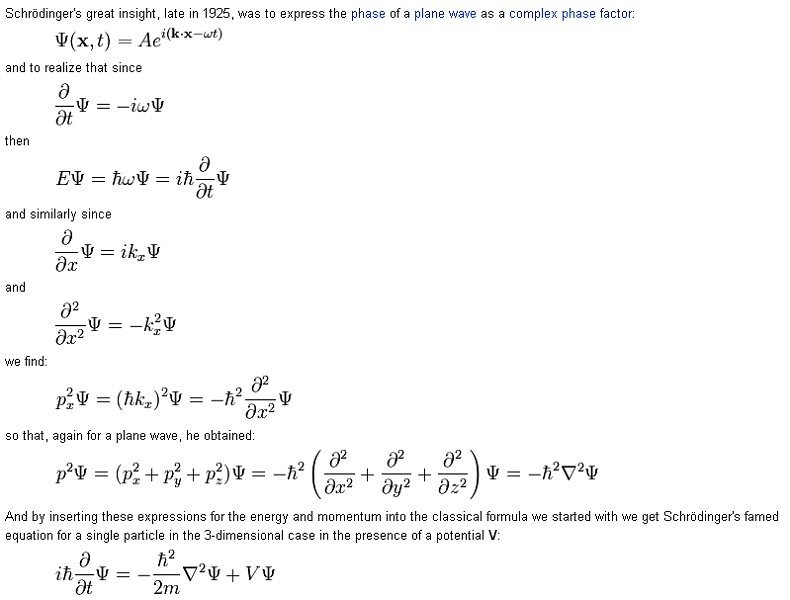
|
Main Topics > Quantum Theory and the Uncertainty Principle(introduction)
Quantum theory (otherwise known as quantum physics or quantum mechanics) is one of the two main planks of modern physics, along with general relativity, and between them the two theories claim to explain virtually everything about the universe. General relativity gives us our picture of the very big (space-time and gravity), while quantum theory gives us our picture of the very small (atoms and their constituents). Technically, quantum theory is actually the theory of any objects isolated from their surroundings but, because it is very difficult to isolate large objects from their environments, it essentially becomes a theory of the microscopic world of atoms and sub-atomic particles. This is especially true for those parts of the theory which rely on the absolute indistinguishability of fundamental particles, an indistinguishability which is impossible to find in the everyday world of composite, large-scale objects. Quantum theory is used in a huge variety of applications in everyday life, including lasers, CDs, DVDs, solar cells, fiber-optics, digital cameras, photocopiers, bar-code readers, fluorescent lights, LED lights, computer screens, transistors, semi-conductors, super-conductors, spectroscopy, MRI scanners, etc, etc. By some estimates, over 25% of the GDP of developed countries is directly based on quantum physics. It even explains the nuclear fusion processes taking place inside stars. However, some of its findings and principles are distinctly counter-intuitive and fiendishly difficult to explain in simple language, without resorting to complex mathematics way beyond the comfort level of most people (myself included!). This situation is not helped by the fact that the “theory” is largely a patchwork of fragments accrued over the last century or so, that some elements of it are still not well understood by the scientists themselves, and that some of the bizarre behavior it predicts appears to fly in face of what we have come to think of as common sense.
Richard Feynman, winner of the 1965 Nobel Prize for Physics and arguably one of the greatest physicists of the post-war era, is unapologetically frank: “I think I can safely say that nobody understands quantum mechanics”. Niels Bohr, one the main pioneers of quantum theory, claimed that: “Anyone who is not shocked by quantum theory has not understood it”. In the 1920s and 1930s, Bohr, Schrödinger, Heisenberg and others discovered that the atomic world is in fact full of murkiness and chaos, and not the precision clockwork suggested by classical theory. Classical physics can be considered as a good approximation to quantum physics, typically in circumstances with large numbers of particles. Indeed, classical physics has served us well up until the 20th Century, and for most everyday purposes it still does. But modern physics, which includes quantum physics and general relativity, is more all-encompassing, more fundamental and altogether more accurate - physics taken to a different level. Momentum and position, for instance, are approximations of the world of larger-sized things that we call the classical world, but the underlying reality of the quantum world is quite different. As we will see, even a rough understanding of quantum theory requires some background discussion of atomic theory and some discussion of the uncertainty principle before any sense at all can be made of it. Only then will some of the more obscure and bizarre aspects of quantum theory (such as wave-particle duality, superposition, nonlocality, decoherence, etc) make a little more sense. So, please, bear with me!
|
Back to Top of Page
Introduction | Main Topics | Important Dates and Discoveries | Important Scientists | Cosmological Theories | The Universe By Numbers | Glossary of Terms | Blog | A Few Random Facts | Angular Momentum Calculator | Big Bang Timeline
NASA Apps - iOS | Android
The articles on this site are © 2009-.
If you quote this material please be courteous and provide a link.
Citations | Sources | Privacy Policy
